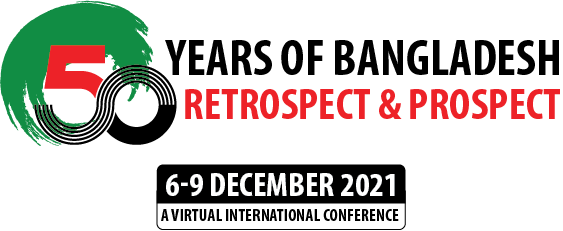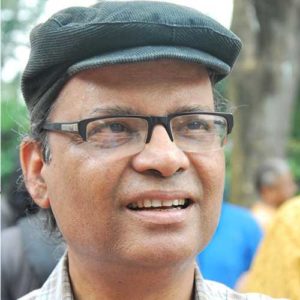
Session 4: TOWARDS A JUST SOCIETY
Tuesday, Dec 7, 2021 | 8:00pm – 9:45pm | Bangladesh Time (GMT+6)

Professor M. M. Akash
Professor & Chairman, Department of Economics, Dhaka University
Paper Title – Inequality and human development: the Bangladesh perspective
Abstract:
As regards the concept of Inequality—two questions are important—inequality of what and inequality among whom. Inequality must be measured across a dimension—for example, income, wealth, access to social services etc. The whom question can be investigated either in terms of various groups of a nation or between nations globally. In this context, inequalities may be inter-groups, inequalities between groups; or intra-group, that is inequalities within a group.
While analyzing human development, it is not enough to focus only at the aggregate levels, since the aggregate often masks the disparities in both the overall human development achievements and deprivations. Thus, concentrating only on averages, may give a misleading picture. It is therefore essential to go beyond the average and disaggregate the human development data to get the true picture of human development in a society. Examining inequalities in human development is thus critical.
Distribution of each dimension of human development actually may show different degrees of inequality existing within the same population or between different subsets of a population. Inequalities in income, life expectancy, and mean years schooling are never captured adequately in the composite measure of an overall HDI. Therefore, aggregate value of HDI and the disaggregated value of the same are important to have a comprehensive picture of human development in a society. Disaggregated information may help the policy makers to develop target group-oriented human development policies.
Even though Bangladesh has been impressively successful in reducing its absolute poverty, the same is not true of inequality. Sustained economic growth in Bangladesh has not been associated with declining income inequality. Over time, it showed periodic fluctuations as measured by the income Gini-coefficient. During the period 2000-2010, it remained stable around 0.45, reflecting positive results of government’s pro-poor and inclusive growth policies. However, the latest data shows that in 2016, the income Gini-coefficient is back to its long-run value of 0.483, indicating an increase in income inequality in the last six years. Inequalities in opportunities and outcomes have become a serious development challenge for Bangladesh, having adverse effects on human development. The constitution of ‘Peoples Republic of Bangladesh’ has also granted certain fundamental rights for all citizens without any discrimination. The equality of these rights ensures equal opportunities to everybody.
This Paper focuses on the trend of inequality and poverty in Bangladesh during the period of 1980-2016. It tries to examine inequality among various subsets of the population such as rural and urban, male and female, poor and non poor, with respect to their various dimensions of disparity and injustice. Besides income inequality it also tries to measure social inequality along other important human development dimensions like consumption and child nutrition, educational achievements, health status, etc. It is also shown that although there is a contrast in the development process of Bangladesh which shows simultaneously an impressive growth of per-capita income and reduction in the HCR of absolute poverty, there is also clearly visible from the data a persistent strong and secular trend in the rise of economic and social inequalities.
The paper also argues that, unless carefully designed redistributive measures are not taken along the different dimensions of inequity and inequality to ensure inclusive growth, Bangladesh may face a middle-income trap or political turmoil in future.
Government of Bangladesh (2018) Sustainable Development Goals: Bangladesh Progress Report 2018. General Economic Division, Ministry of Planning, Dhaka, December
 +(88 02) 55001185
+(88 02) 55001185 
